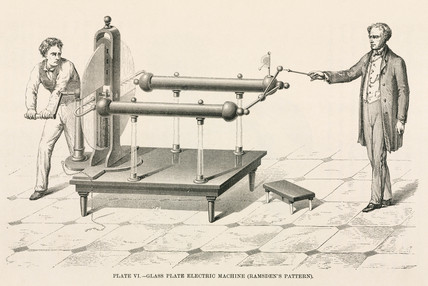Yesterday, I watched a very impressive two-part television documentary made by Stephen Fry, entitled "The Secret Life of the Manic Depressive" and filmed in 2006. The documentary is about his struggle with manic depression, which he prefers to call "bipolar disorder" as this is its official name and definitively does not involve a state of continuous depression. Bipolar disorder is often treated with mood stabilizing medications and, sometimes, other psychiatric drugs. However, these are not always effective and often cause a lot of side-effects.
The second part of the documentary is about Stephen wondering whether he should consider taking drugs or other kinds of psychiatric treatment, as it looks like his symptoms are getting worse over time. So in this part he visits a few people he knows and that have also been diagnosed with bipolar and are using some form of therapy. Among them is Andy Behrman, also known as "Electroboy". According to his website www.electroboy.com, "after two unsuccessful years of experimenting with all different combinations of medication to stabilize his wild mood swings, he opted for intensive bouts of electroshock therapy," [Ed.] also known as "electroconvulsive therapy", or ECT in short, "as a last resort. He was temporarily cured."
 This, of course, brings back memories of one of the famous scenes of the movie "One flew over the cuckoo’s nest", in which Jack Nicolson rallies the patients of a mental institution together to take on the oppressive Nurse Ratched, a woman more a dictator than a nurse. He finally receives ECT to calme him down. As you can see from the picture at left, the applied ECT therapy used to be quite agressive, leading to brain convulsions and seizures or even memory loss, and has therefore been classified as "high risk" by the American Food and Drug Administration, or FDA for short.
This, of course, brings back memories of one of the famous scenes of the movie "One flew over the cuckoo’s nest", in which Jack Nicolson rallies the patients of a mental institution together to take on the oppressive Nurse Ratched, a woman more a dictator than a nurse. He finally receives ECT to calme him down. As you can see from the picture at left, the applied ECT therapy used to be quite agressive, leading to brain convulsions and seizures or even memory loss, and has therefore been classified as "high risk" by the American Food and Drug Administration, or FDA for short.
Coincidentally, the American Psychiatric Association recently stated that the FDA should move the procedure to a medium risk state as they believe the current devices are not as brute force as their older siblings. Opponents, however, state that ECT may lead to memory loss and all sorts of other complications. If you want to decide for yourself, please check out the following YouTube movie: http://www.youtube.com/watch?v=zYl13Relzbs.
My personal opinion is that, though the doctors try to do a professional job, the applied therapy is not very patient specific and the majority of parameters are determined purely on a trial-and-error basis. Adding this to the fact that ECT is not the primary therapy, but merely serves to evoke a seizure (like you have during an epileptic insult), which is the actual therapy, makes me wonder whether there aren’t any prospects of developing a better therapy, which is better tailored to the disorder at hand and, of course, better to the patient.
Anyway, this was my sermon for the late Monday morning. If you are interested in watching "The Secret Life of the Manic Depressive", just let me know and I’ll see what I can do.
Wouter



 In future implants might be recharged by the brain. (Photo: Ana Laura Santos)
In future implants might be recharged by the brain. (Photo: Ana Laura Santos) Besides many research related posts on this weblog, there is another important aspect in universities: education. Currently the spring examinations take place. It is time to see if our efforts in introducing the students into the exciting world of transistors were good enough. Today I was supervising a retake of a first year BSc-course. In order not to get too bored, I printed out a bunch of papers to read through…
Besides many research related posts on this weblog, there is another important aspect in universities: education. Currently the spring examinations take place. It is time to see if our efforts in introducing the students into the exciting world of transistors were good enough. Today I was supervising a retake of a first year BSc-course. In order not to get too bored, I printed out a bunch of papers to read through… This, of course, brings back memories of one of the famous scenes of the movie "
This, of course, brings back memories of one of the famous scenes of the movie "


